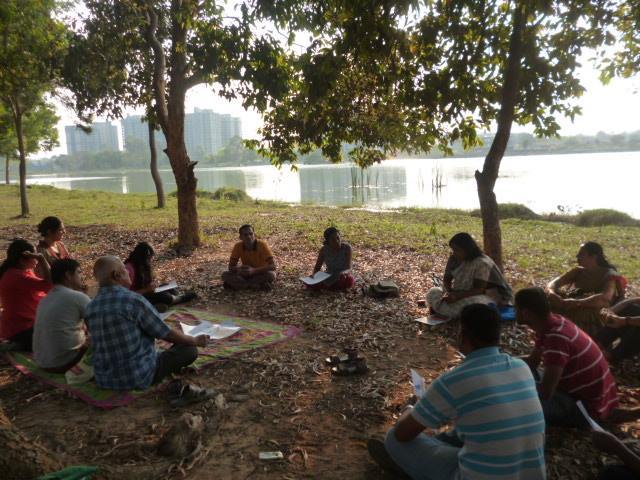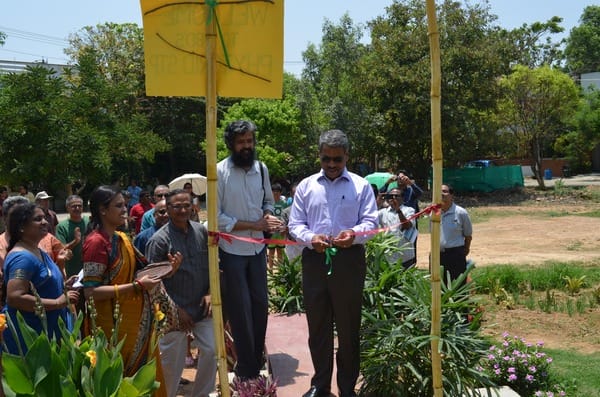Bellandur Buzz Issue # 32
Date: 27th March 2015.
This fortnightly newsletter is published by the citizen group bellandur.forum@googlegroups.com
Water Tanker rates in the neighborhood
Based on the inputs from some residential communities in Bellandur Sarjapur road region, current water tanker rates appear to be hovering in the range of Rs 460 to 500 per tanker. Summer is approaching and the tanker guys are demanding for a revamp in the rates. New rate being asked for in most places in Rs 525 – 600. Residents wonder why the raise in prices when diesel prices have dropped last year. Perhaps the water sources are being controlled more tightly? Often the tanker owner does not own the water source and is allowed to pull only X tankers everyday for a price, lest the source runs dry.
Are we sure the tanker water is ‘clean’ water and meets the basic safety norms? While the number of borewells and the depths they are dug to are increasing everyday in the area, they are already dry or running dry quickly. The surest solution towards sustainable and safe water is probably to recharge the ground water through surface run-offs and rainwater harvesting (Cauvery water continues to be a pipe-dream in this part of the town).
(Many thanks to communities which shared their rates despite the sensitive nature of the data)
World Water day events – 22nd march

Pic by Rainwater club: Book reading at Kasavanahalli Kere
The events at Soul Kere, Kaikondarahalli Kere and Kasavanahalli Kere were all delightfully wonderful!
There were about 50 runners and 20 volunteers who participated in the Soul Kere event. Genpact organized and sponsored the event. Dan Singh did catering for the event bringing really delicious paranthas and for making the ‘best chai’ (quoting many participants). Kaikondarahalli Kere hosted the story sessionand the quiz. The more than 40 people present for the story-telling and quiz event were all very happy to have spent their Sunday evening at the lake. There was a book reading session at the beautiful Kasavanahalli Lake. There were about 30 people at this session.
The series of events was organised smoothly. All the people who conducted the events took charge of their events and all MAPSAS involvement was minimal. If this is the way things are going to proceed, then it is a win win for our community because it means that more people are taking ownership of community involvement in our lakes.
One of the goals of MAPSAS has been to actively try to make ourselves redundant with time because we believe strongly that no movement can or should be sustained only because of the involvement of a few people. The only way to protect our commons is if more and diverse groups of people come forward to offer suggestions for how to manage these community resources better and then help carry those suggestions forward with larger community consent, offer time to conduct community events, to visit various government officials to solve ongoing problems and meet more people from the community at events like the ones above.
Update by MAPSAS.
Minutes of KSPCB meeting on 20th March
Many citizens from Bellandur ward met with Dr. Vaman Acharya, Chairman of KSPCB on 20th March. On one hand, we have a ward with severe water scarcity, dried up lakes, heavy dependence on water tankers and on the other hand excess of treated water from apartment sewage treatment plants which is not allowed to be released into lakes or storm water drains as per KSPCB rules.
The KSPCB is willing to try out a model where a group comprising of representatives from the lake’s neighborhood (RWAs), KSPCB and local NGOs will take responsibility for the monitoring of the lake (lake water quality, input water quality ground water quality). In this context, they have asked for the above groups to submit proposals indicating a proposal to go about with the discharge of treated STP water into lakes/recharge structures. Post evaluation of this proposal, KSPCB will give approvals. BIOME would also be willing to help with the writing and consolidating these proposals. The following data would have to go into the proposal:
- The group that is willing to take responsibility for the lake/process
- Current Depth/Volume/Quality/Other Details of Lake/Recharge structures
- Volume/Quality of water that is expected to be discharged
- The process of discharge – time of discharge/process for monitoring (what parameters will be tested, by who, at what frequency)
Three lakes that are being considered Agara (Mantri Sarovar), Puttenahalli (L&T South City), Kalena Agrahara. How far an RWA will be ready to take responsibility of treated water after exiting its premises remains to be seen!
Update by Shubha Ramachandran, BIOME
Phytorid STP inauguration at RBD

Pic by Pragya Singh: Phytorid inauguration by Justice Adi
Rainbow Drive is one of the few residential colonies which can claim to be water self-sufficient, despite having no water supply from BWSSB. Extensive rainwater harvesting and ground water recharge techniques used by this villa community has made it an oasis on Sarjapur Road.
To close the loop in sustainable water management, Rainbow Drive implemented a 250 KLD STP plant based on Phytorid technology from NEERI CSIR, a premier environmental research institute of government of India. The plant is now fully functional and passes all the KSPCB parameters. Rainbow Drive is in the process of putting up distribution pipelines to the villas for the reuse of treated water for all non-potable purposes. Rainbow Drive is also planning to, with permission from KSPCB, use the surplus treated water to recharge the ground using shallow ponds and recharge pits.
The beauty of the PHYTORID plant lies in the fact that it has almost no operational and maintenance cost. The energy consumption can drop to as low as 10% as compared to conventional electro-mechanichal aerobic STPs. Also, one does not need any skilled staff to maintain the plant. An hour per day of a gardener’s time is enough for the upkeep of the plant. Due to no human interference in its operation, the consistency of the treated water output is high. This ensures complete peace of mind for the management committee of the association and residents are happy to reuse the treated water as they believe in the quality of treated water.
Update by KP Singh.
Write to thebellandurbuzz@gmail.com
This article was co-edited by Ritesh Chitalia.